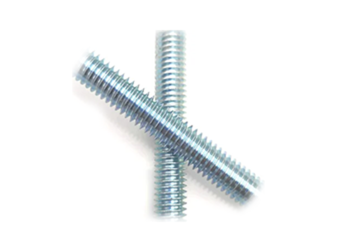Nov . 07, 2024 14:22 Back to list
Durable Rope Clamps for Heavy Duty Applications and Outdoor Adventures
The Importance of Heavy Duty Rope Clamps A Comprehensive Guide
When it comes to securing heavy loads and ensuring safety in various applications, heavy duty rope clamps play a crucial role. These sturdy devices are designed to create strong and reliable connections between ropes, preventing slippage and ensuring that the integrity of the setup is maintained. Whether you are an outdoor enthusiast, a construction worker, or someone involved in maritime activities, understanding the importance and functionality of heavy duty rope clamps can significantly enhance your operations.
Understanding Heavy Duty Rope Clamps
Heavy duty rope clamps, also known as wire rope clamps or cable clamps, are devices used to secure the ends or loops of ropes, wires, or cables. They typically consist of a U-bolt, a saddle, and nuts. The U-bolt wraps around the rope, while the saddle sits on top, and the nuts are tightened to clamp the rope securely in place. This simple yet effective design enables the clamp to withstand significant loads without slipping or breaking.
Applications of Heavy Duty Rope Clamps
These clamps find applications in various fields, including
1. Maritime Use In the boating and fishing industry, heavy duty rope clamps are essential for securing ropes that hold boats in place, adjust sails, or anchor lines. Their ability to endure harsh weather conditions and saltwater exposure makes them exceptionally reliable.
2. Construction Heavy duty rope clamps are vital in construction sites where lifting heavy materials is a daily task. They ensure that cable or rope systems used for lifting are secure, reducing the risk of accidents.
3. Outdoor Activities For campers and hikers, these clamps are invaluable for securing tarps, tents, and equipment. They provide peace of mind when setting up camp in unpredictable weather conditions.
4. Industrial Applications In industries where heavy machinery is used, heavy duty rope clamps ensure that cables and ropes used in lifting and transporting goods are secured adequately. This reduces the risk of equipment failure and accidents.
Choosing the Right Heavy Duty Rope Clamps
When selecting a heavy duty rope clamp, several factors should be considered
heavy duty rope clamps

1. Material Clamps are typically made from steel, aluminum, or stainless steel. Stainless steel is ideal for marine environments due to its corrosion resistance, while galvanized steel offers enhanced durability in construction applications.
2. Size and Capacity Choose a clamp that matches the diameter of the rope and can handle the load you intend to secure. Always refer to the manufacturer's specifications for load rating and compatibility.
3. Type of Clamp There are various types of rope clamps available, such as double saddles and single-saddle clamps. The choice depends on the specific requirements of your application.
4. Installation Some clamps are designed for easy installation and removal, while others may require more permanent setups. Consider your needs when selecting the right type.
Installation Tips for Heavy Duty Rope Clamps
Proper installation is key to ensuring the effectiveness of heavy duty rope clamps. Here are some best practices
- Use the Correct Tools Make sure to have the right tools on hand, including wrenches and pliers for tightening nuts and bolts.
- Follow Manufacturer Guidelines Each clamp will come with specific instructions regarding installation and load capacity. Adhering to these guidelines is crucial for safety.
- Double Check After installation, always double-check the tightness of the clamps. This simple step can help prevent accidents later on.
Conclusion
Heavy duty rope clamps are indispensable tools for anyone working with ropes in demanding environments. Their robustness and reliability make them essential for a wide range of applications, from maritime to construction and outdoor activities. By understanding their functionality, choosing the right type, and following proper installation techniques, users can ensure safety and efficiency in their operations. Investing in quality heavy duty rope clamps is not just a matter of convenience; it's a step towards greater safety and security in your work and recreational activities.
-
The Ubiquitous Reach of DIN934 in Application Realms
NewsMay.16,2025
-
Exploring Different Bolt Types
NewsMay.16,2025
-
Cracking the Code of Sleeve Anchor Mastery
NewsMay.16,2025
-
Clamp Design Principles,Types and Innovations
NewsMay.16,2025
-
Artistry Inspired by the Humble Anchor Bolt
NewsMay.16,2025
-
A Deep Dive into Screw Types
NewsMay.16,2025


